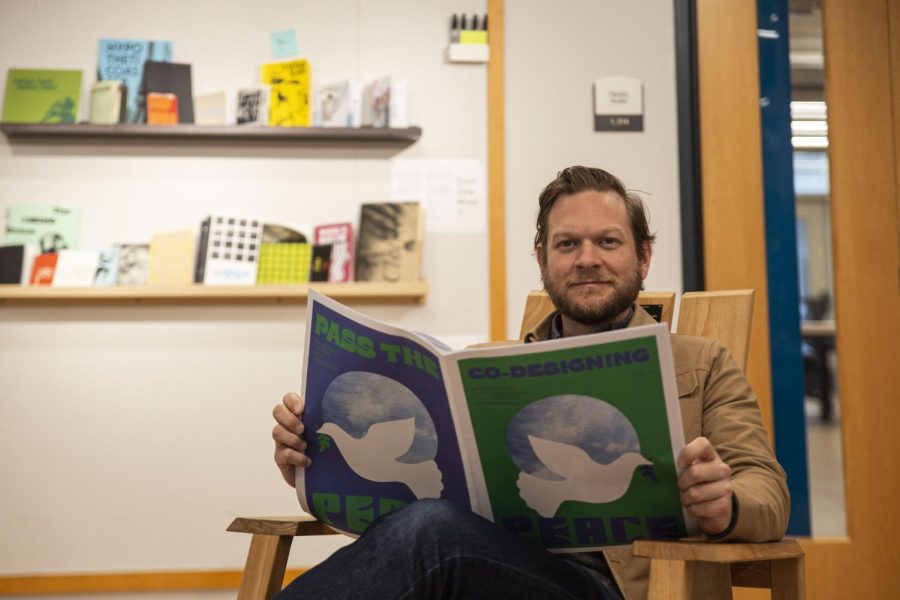Co-designing for Peace class explores methods for peace in inclusive, collaborative environment
Professor Gray Garmon, director of the Center for Integrated Design, poses with a copy of a newsprint created in Co-Designing for Peace.
April 11, 2023
Throughout history, peace usually follows the end of war and conflict. But for UT professor Gray Garmon, the concept of peace could encompass a much larger scope.
“We don’t define love as the opposite of hate, yet we define peace as the end of war. And it feels too small,” said Garmon, director of the Center for Integrated Design. “The opportunity for this vessel could be so much bigger.”
Aiming to define peace as more universal and combine it with his background in human-centered design, Garmon crafted a UT class called Co-designing for Peace in spring 2022. Renewed for this year, the five-week class in the Center for Integrated Design welcomes around 12 students from all majors and years to a collaborative design studio, where they design various media to promote intrapersonal and interpersonal peace based on their own interpretations.
“Their design projects are about creating methods or processes or tools that anybody could use to increase peace in their own life,” Garmon said. “So it’s not about just making a building, fashion or a poster. In this class, we’re designing experiences that other people can participate in to increase peace in their own life.”
Throughout the course, students formulate and present their designs to foster peace. During the final weeks of the class, the students curate their projects into an interactive newspaper published in print and online.
Garmon said valuable aspects of the class include the diversity it fosters and the potential for growth it produces.
“Each person brings their own experience to the class. What I love about that is it allows each person to uniquely create something that contributes to a much larger idea,” Garmon said. “I’m not in charge. I might be the professor of the class, but it’s not me designing or producing the ideas. It’s everyone who’s contributing.”
Design graduate student Libby Riddell said she appreciates the collaborative and discussion-based nature of the class and the variety of perspectives available.
“Gray does a great job of creating a classroom setting that is inclusive, engaging and collaborative,” Riddell said.
For design sophomore Emma Brey, the insights they gained became one of the highlights of the class. Using the technique of aromatherapy to find peace within themselves, they employed different scents on index cards to identify how individuals would react to certain smells and what they might associate with them.
“It was a positive experience because it was interesting to hear stranger’s stories… The fact that such powerful stories came out of such a little activity was really interesting to me,” Brey said. “How we can connect with people is so simple. It’s as easy as just giving someone a card telling them to smell it.”
Brey said that taking the Co-designing for Peace class changed their outlook on life.
“My overall experience was very wisdom-building,” Brey said. “The class brought out a lot of empathy for not only other students but also my environment. The class in general just makes me think of little things that I usually would overlook.”



